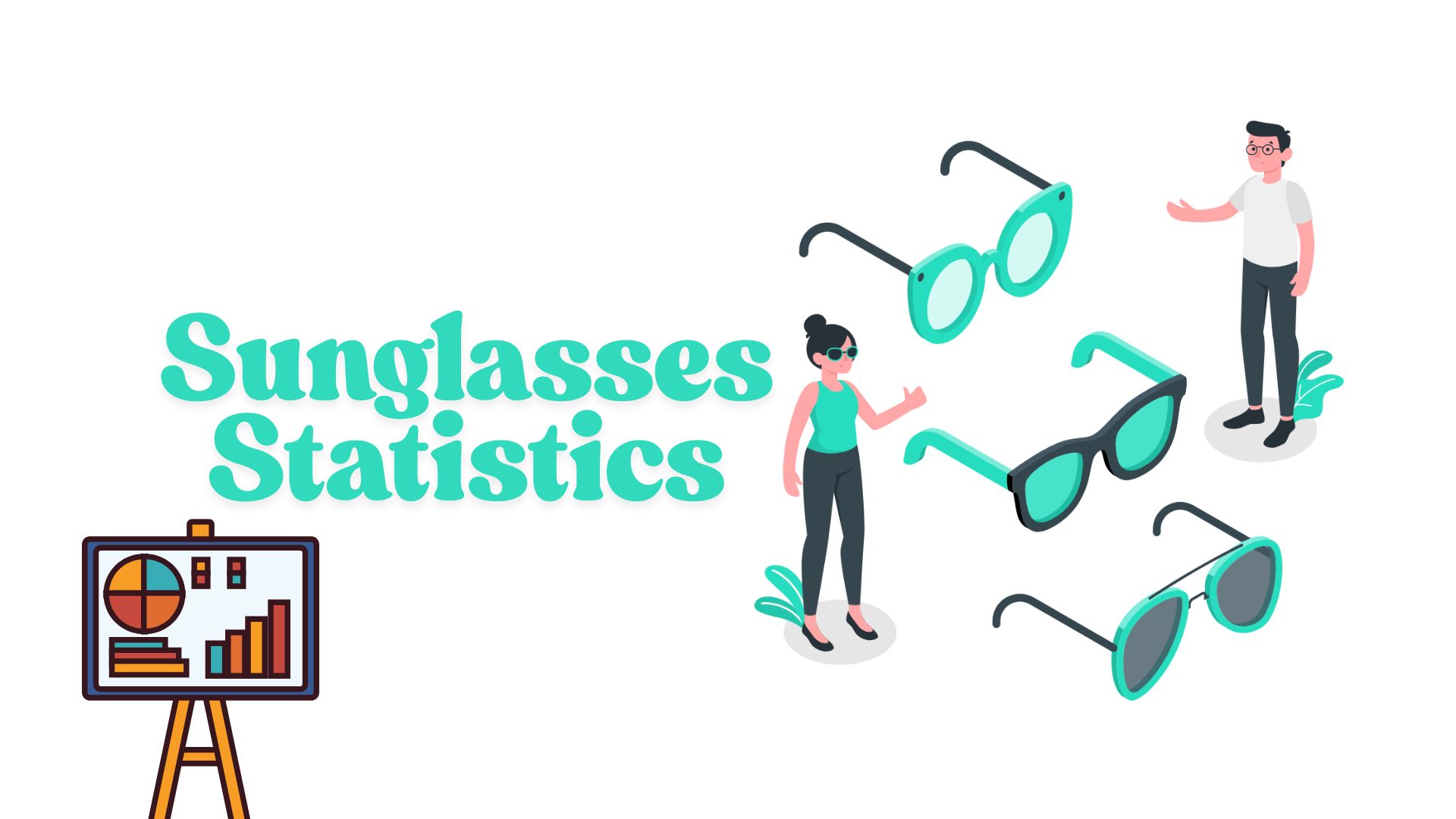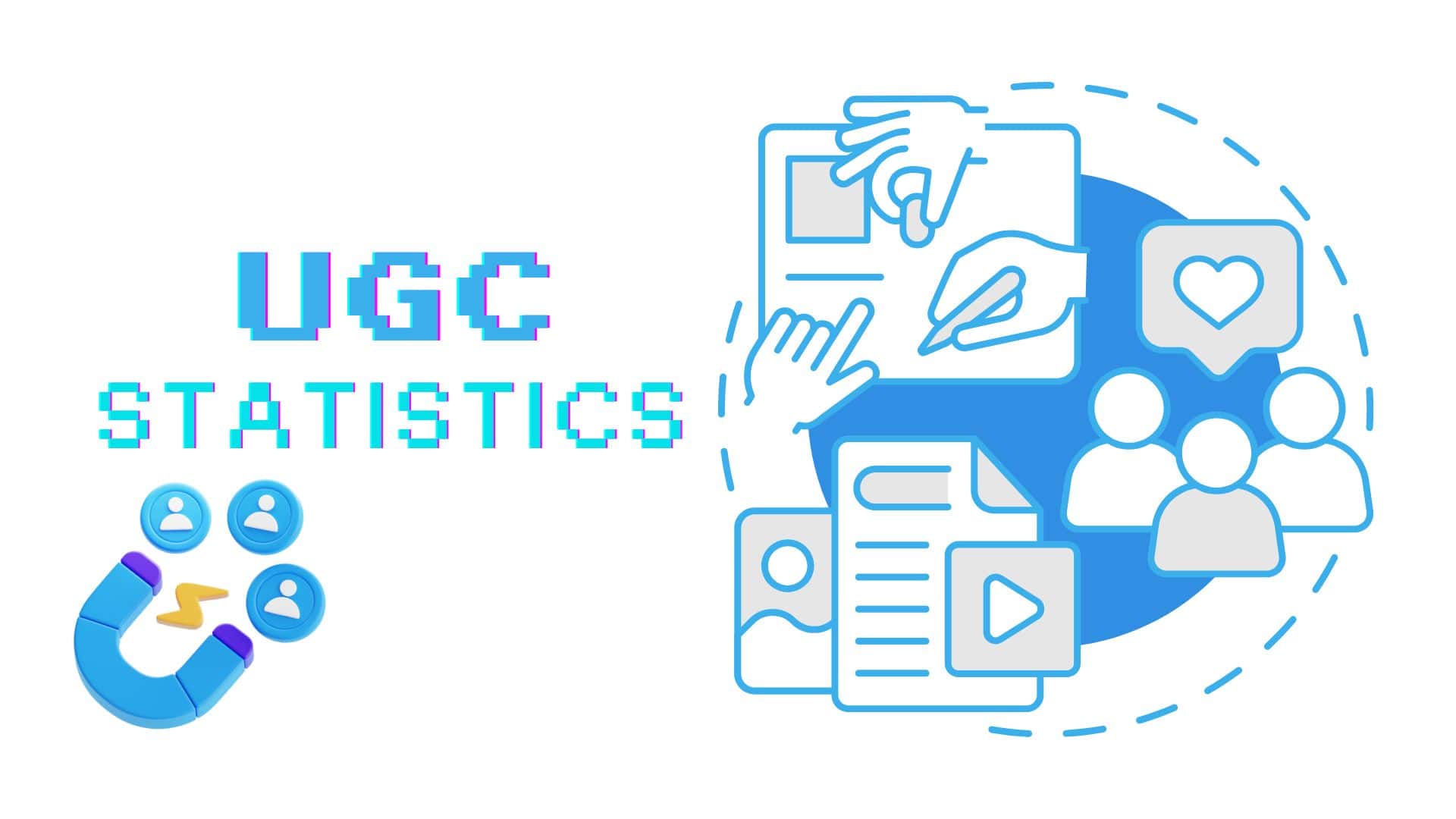Sunglasses Statistics – Health Awareness, Fashion, and Smart Tech Fuel Industry Growth

Updated · Apr 13, 2025


Sunglasses Statistics – Eyewear is one of the biggest industries globally. Predictions expect global revenues to exceed $151.37 billion this year, with the average consumer expected to spend an average of $19.38 on eyewear products.
The largest segment of this industry comprises spectacle lenses. In particular, an increasing number of consumers are leveraging prescription eyeglasses to correct the rise in refractive errors, including myopia or nearsightedness. Spectacle lenses are closely followed by contact lenses, which are more streamlined corrective aids that provide clearer, sharper, and frame-free vision.
That makes sunglasses the third-largest segment of the industry, and they’re slowly catching up to glasses and contact lenses in terms of market growth. Due to their protective properties, status as fashion accessories, and ability to accommodate emerging technologies, sunglasses have become more appealing to consumers and boast a market that’s set to experience significant growth toward the end of the decade.
TABLE OF CONTENTS
Current Performance and Outlook for the Sunglasses Market
The latest reports from The Business Research Company value the global sunglasses market at $19.05 billion. This valuation is primarily due to the number of product segments it covers.
The likes of glare-blocking or polarized sunglass lenses, non-polarized lenses, acetate and metal frames, and dedicated sunglasses for sports, outdoor activities, and fashion—which are all widely available through physical and online distribution channels—offer more choices to consumers looking to purchase these eyewear products. As such, the sunglasses market is expected to expand at a compound annual growth rate of 5.7% and reach a size of $23.83 billion by 2029.
Public Eye Health Awareness Drives Sunglasses Demand
By far, the leading growth factor for the sunglasses market lies in increasing public eye health awareness. A recent Nature report particularly noted a spike in Google searches for “my eyes hurt” following the April 2024 solar eclipse in North America. Researchers concluded the phenomenon led to better public awareness of solar retinopathy, a condition involving retinal damage caused by looking directly at the sun, as well as other sun-related eye health impacts.
Its UV rays, which can fully penetrate the eye in just 60 seconds, are closely linked to the accelerated development of blindness-causing conditions like age-related macular degeneration, cataracts, and even eye cancer. Sunglasses that carry a ‘UV400’ rating, which certifies their ability to block 100% of the sun’s UV rays, can significantly reduce one’s vulnerability to these diseases. Because of this growing awareness, The Vision Council’s 2024 Market inSights report reveals that 58% of its respondents bought non-prescription sunglasses in 2024. As knowledge of sun-related eye health impacts continues to grow, public awareness is likely to continue spurring sunglasses sales in 2025.
Regional Analysis
The North American market, and in particular the United States, is currently the largest and fastest-growing region covered by the global sunglasses market. According to Eyefiy Eyewear, that’s primarily due to the region’s competitive landscape, which caters to a varied range of buyers.
Here, sunglasses sales are driven by North America’s diverse climate conditions, with the likes of sunny Florida and snowy Canada generating demand for protective sunglasses suitable for different kinds of weather. The region’s buyers are also driven by a desire to follow ever-changing fashion trends heavily influenced by celebrity culture. As a result, the US alone is expected to generate up to $5.36 billion, or roughly 28% of the global sunglasses market’s revenue, in 2025.
Luxury Sunglasses Account for 15% of the Market
As the demand for quality construction, protection, and visual appeal rises, more consumers are investing in sunglasses from high-end brands, such as designer labels. Fashion retailer Trovelle thus finds that luxury sunglasses currently account for 15% of the global sunglasses market. Though this product segment primarily caters to high-income consumers, it’s becoming increasingly vital to designer brands now that it appeals to a broader set of buyers.
In particular, more buyers are investing in the quality craftsmanship, innovative materials, and stylistic and functional features offered by these products amid rising disposable incomes around the world. Sales are expected to strengthen even further now that luxury sunglasses are more accessible. For example, Sunglass Hut includes models from leading designer labels like Versace, Dolce & Gabbana, and Miu Miu. This variety makes them widely available online, and they are on sale in over 3,000 stores, where the retailer operates in the US, UK, Australia, and other major markets.
Ray-Ban Meta is Single-Handedly Fueling Growth For Smart Sunglasses
Eyewear is the latest frontier in wearables, with models that embed emerging technologies into their frames becoming increasingly popular with users. In fact, the number of smart glasses wearers in the US alone is expected to increase from 12.61 million to 14.39 million between 2023 and 2025. That demand is largely being driven by one particular model: the Ray-Ban Meta. These frames, which can be bought with clear or UV-blocking tinted lenses, stand out for being one of the first smart sunglasses suitable for everyday use. Through voice-activated commands, wearers can use them for hands-free communication, media capture, and AI-powered queries.
As a result, Counterpoint Research finds that demand for the Ray-Ban Meta alone created a 210% year-on-year surge in global shipments for the entire industry, making it an undisputed leader in the smart sunglasses space. As a result, more brands are entering the market, and Ray-Ban owner EssilorLuxottica itself has now finalized a long-term partnership with Meta to produce more smart eyewear models. These trends have market analysts believing that 2025 will be a “war” of hundreds of smart sunglasses.

Tajammul Pangarkar is the co-founder of a PR firm and the Chief Technology Officer at Prudour Research Firm. With a Bachelor of Engineering in Information Technology from Shivaji University, Tajammul brings over ten years of expertise in digital marketing to his roles. He excels at gathering and analyzing data, producing detailed statistics on various trending topics that help shape industry perspectives. Tajammul's deep-seated experience in mobile technology and industry research often shines through in his insightful analyses. He is keen on decoding tech trends, examining mobile applications, and enhancing general tech awareness. His writings frequently appear in numerous industry-specific magazines and forums, where he shares his knowledge and insights. When he's not immersed in technology, Tajammul enjoys playing table tennis. This hobby provides him with a refreshing break and allows him to engage in something he loves outside of his professional life. Whether he's analyzing data or serving a fast ball, Tajammul demonstrates dedication and passion in every endeavor.











